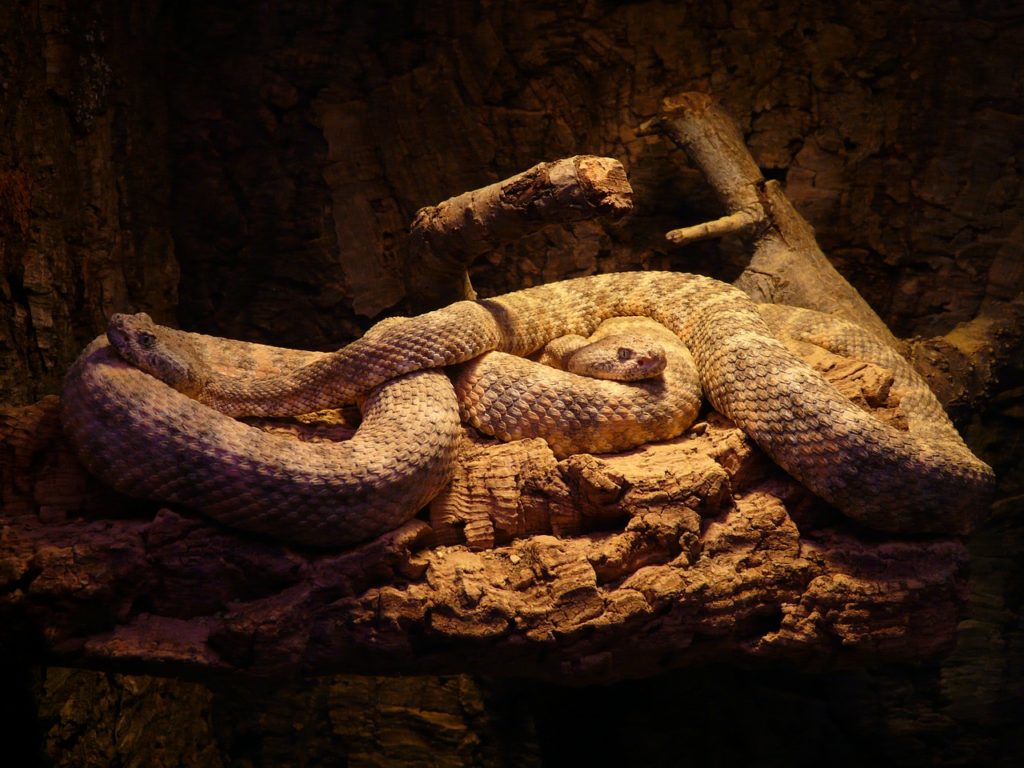The chance of a snakebite in a survival situation is rather small if you are familiar with the various types of snakes and their habitats. However, it could happen and you should know how to treat a snakebite.
Deaths from snakebites are rare. More than one-half of snakebite victims have little or no poisoning, and only about one-quarter develop serious systemic poisoning. However, the chance of a snakebite in a survival situation can affect morale, and failure to take preventive measures or failure to treat a snakebite properly can result in needless tragedy.
How to Treat a Snakebite
The primary concern in the treatment of a snakebite is to limit the amount of eventual tissue destruction around the bite area. A bite wound, regardless of the type of animal that inflicted it, can become infected from bacteria in the animal’s mouth. With nonpoisonous as well as poisonous snakebites, this local infection is responsible for a large part of the residual damage that results.
Snake venoms not only contain poisons that attack the victim’s central nervous system (neurotoxins) and blood circulation (hemotoxins), but also digestive enzymes (cytotoxins) to aid in digesting their prey. These poisons can cause a very large area of tissue death, leaving a large open wound. This condition could lead to the need for eventual amputation if not treated.
Shock and panic in a person bitten by a snake can also affect the person’s recovery. Excitement, hysteria, and panic can speed up the circulation, causing the body to absorb the toxin quickly. Signs of shock occur within the first 30 minutes after the bite.
Green Mamba
Before you start treating a snakebite, determine whether the snake was poisonous or nonpoisonous. Bites from a nonpoisonous snake will show rows of teeth. Bites from a poisonous snake may have rows of teeth showing, but will have one or more distinctive puncture marks caused by fang penetration. Symptoms of a poisonous bite may be spontaneous bleeding from the nose and anus, blood in the urine, pain at the site of the bite, and swelling at the site of the bite within a few minutes or up to 2 hours later. Breathing difficulty, paralysis, weakness, twitching, and numbness are also signs of neurotoxic venoms. These signs usually appear 1.5 to 2 hours after the bite.
If you determine that a poisonous snake bit an individual, take the following steps:
- Reassure the victim and keep him still
- Set up for shock and force fluids or give an intravenous (IV)
- Remove watches, rings, bracelets, or other constricting items
- Clean the bite area
- Maintain an airway (especially if bitten near the face or neck) and be prepared to administer mouth-to-mouth resuscitation or CPR
- Use a constricting band between the wound and the heart
- Immobilize the site
- Remove the poison as soon as possible by using a mechanical suction device or by squeezing
Do not:
- Give the victim alcoholic beverages or tobacco products
- Give morphine or other central nervous system (CNS) depressors.
- Make any deep cuts at the bite site. Cutting opens capillaries that in turn open a direct route into the bloodstream for venom and infection.
- Put your hands on your face or rub your eyes, as venom may be on your hands. Venom may cause blindness.
- Break open the large blisters that form around the bite site.
After caring for the victim as described above, take the following actions to minimize local effects:
- If infection appears, keep the wound open and clean.
- Use heat after 24 to 48 hours to help prevent the spread of local infection. Heat also helps to draw out an infection.
- Keep the wound covered with a dry, sterile dressing.
- Have the victim drink large amounts of fluids until the infection is gone.
